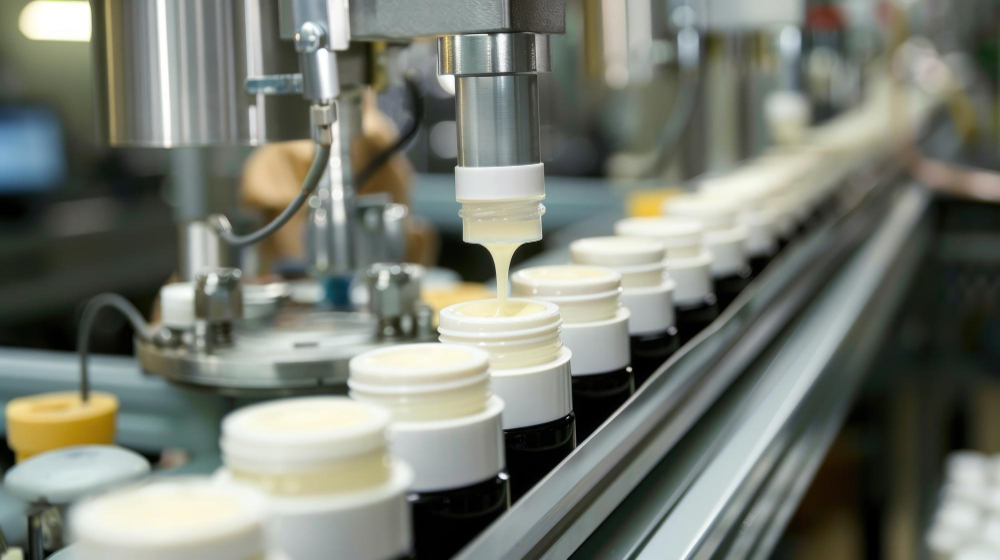by Ravindra Warang
7 minutes
Cream Manufacturing Equipment Explained: From Mixers to Fillers
Learn how creams are made with modern mixers, emulsifiers, and filling machines for pharma-scale production.

It started in a small research lab—just a beaker, a stirrer, and an idea for a new dermatological cream. Fast forward a few years, and that same cream is now being produced in a GMP-certified facility, filling thousands of tubes per hour.
Behind every successful cream on the shelf is a network of machines—each playing a critical role in mixing, emulsifying, homogenizing, cooling, and filling. Understanding cream manufacturing equipment is essential for formulation scientists, production managers, and pharma entrepreneurs.
This article explores each type of equipment used in the production of pharmaceutical creams, their function, working principles, and how to select the right configuration for your formulation goals.
The Cream Manufacturing Workflow
Cream production involves multiple integrated stages. Here's a simplified process map:
- Ingredient Preparation – Weighing and pre-mixing raw materials
- Phase Heating – Separately heating oil and water phases
- Emulsification – Blending oil and water into a uniform cream
- Homogenization – Breaking down droplet size for consistency
- Cooling – Controlled cooling to stabilize the emulsion
- Deaeration – Removing trapped air
- Filling and Sealing – Transferring product into containers
Key Equipment in Cream Manufacturing
1. Mixing and Emulsifying Units
- Planetary Mixer: Gentle mixing of high-viscosity creams; ideal for sensitive emulsions.
- Anchor Stirrer: Maintains uniformity; scrapers help with heat-sensitive materials.
- High-Shear Mixer: Rotor-stator mechanism to ensure thorough emulsification.
Most mixers are used in jacketed vessels for heating and cooling phases precisely.
2. Vacuum Homogenizer Emulsifiers
These are the heart of cream manufacturing in modern plants.
Key Functions:
- Uniform droplet size distribution
- Vacuum operation eliminates air bubbles
- Rapid heating and cooling
Components:
- Homogenizing head (rotor-stator or colloid mill)
- Vacuum pump
- Heating jacket
- Control panel with SCADA or PLC system
Heating and Cooling Systems
Precise thermal control is crucial.
- Jacketed Vessels: Provide even temperature distribution.
- Heat Exchangers: Rapid cooling prevents phase separation.
- PID Controllers: Maintain process accuracy and repeatability.
Filling and Sealing Equipment
After processing, creams are packed into:
- Tubes (laminated, aluminum, plastic)
- Jars (HDPE, PET)
- Pumps or sachets (for cosmetic-pharma hybrids)
Tube Filling Machines
Leading Manufacturers: Norden, IWK, Hualian, ProSys, AISA
Semi-Automatic vs Fully Automatic Systems
SCADA and PLC in Equipment Automation
- SCADA (Supervisory Control and Data Acquisition): For centralized process control, data logging, and alarms.
- PLC (Programmable Logic Controller): Controls mixers, valves, temperature, and flow sensors.
These systems ensure:
- GMP compliance
- Batch traceability
- Remote monitoring
- Reduced human error
CIP & SIP Integration
- CIP (Clean-in-Place): Automated internal cleaning using water, detergents
- SIP (Sterilize-in-Place): Steam sterilization for sterile products
These are critical for:
- Cross-contamination prevention
- Meeting regulatory cleaning validation
- Time and labor savings
Choosing the Right Equipment Configuration
When selecting cream manufacturing equipment, consider:
- Batch size and frequency
- Emulsion type (W/O or O/W)
- API sensitivity to shear or temperature
- Need for sterilization or vacuum
- Type of packaging (tube, jar, pump)
- Local regulatory expectations
Customizability and modular designs are ideal for CDMOs or multi-product plants.
Conclusion:
The road from lab-scale mixing to full-scale production is paved with engineering choices. A cream may begin as a formula on paper, but it only becomes a successful product when manufactured with precision, consistency, and compliance.
Whether you’re a contract manufacturer, formulation scientist, or a pharma startup founder, understanding the core equipment behind cream production empowers you to make decisions that save costs, improve quality, and accelerate scale-up.
Because in pharma, it's not just what’s in the tube that matters—it’s how it got there.
FAQs
1. What equipment is used to manufacture pharmaceutical creams?
Mixers, vacuum emulsifiers, homogenizers, deaerators, and tube/jar filling machines are commonly used.
2. What is the role of a vacuum emulsifier in cream production?
It ensures uniform mixing, reduces droplet size, and removes air to produce a stable, high-quality cream.
3. How is cream filled into tubes in pharma plants?
Using tube filling machines equipped with automated filling, sealing, coding, and batch tracking systems.
4. What is the difference between high-shear mixers and homogenizers?
Mixers blend ingredients; homogenizers reduce particle size to ensure uniformity and improve texture.
5. How do you scale up from lab to production for cream formulations?
Start with pilot-scale trials, use modular equipment, and automate with SCADA/PLC for batch reproducibility.




